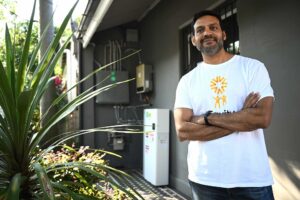 AGL Energy has called the bluff of the federal Coalition over the future of Liddell, pointing out that the ageing coal plant is unreliable, and stating its clear focus is on replacing the capacity with renewable energy and storage.
AGL Energy has called the bluff of the federal Coalition over the future of Liddell, pointing out that the ageing coal plant is unreliable, and stating its clear focus is on replacing the capacity with renewable energy and storage.
CEO Andy Vesey agreed to take the government’s proposal to extend the life of the coal generator or sell it to the company board, but that commitment is likely to be nothing more than a face-saver for a Coalition government pushed into the realms of stupid by its desperation to appease its right wing and the Nationals.
There is no way the AGL board would approve a proposal not favoured by Vesey, and the CEO clearly has other plans afoot, and they are all about renewables, peaking plants and storage.
“Short term, new development will continue to favour renewables supported by gas peaking,” Vesey said after a meeting in Canberra with prime minister Malcolm Turnbull, energy minister Josh Frydenberg, and deputy prime minister and Nationals leader Barnaby Joyce.
“Longer term, we see this trend continuing with large-scale battery deployment enhancing the value of renewable technology. In this environment, we just don’t see new development of coal as economically rational, even before factoring in a carbon cost,” Vesey said in a statement.
And he made clear in this statement that Liddell would retire, as planned. “Following today’s meeting with the Prime Minister, we have committed to deliver a plan in 90 days of the actions AGL will take to avoid a market shortfall once the Liddell coal-fired power station retires in 2022.”
And for good measure, he tweeted that line …. “once the Liddell coal-fired power station retires in 2022.”
AGL also made a nonsense of the Coalition claim that extending Liddell would increase energy security, pointing out that Liddell was “unreliable” and had failed to deliver even half of its capacity during the February 10 heatwave. It says it will have to spend $159 million keeping it together even before the stated 2022 closure.
“Since AGL acquired Liddell from the NSW Government in 2015, AGL has invested $123 million in the plant to improve reliability,” it said in its statement.
“Despite this investment, during the February 2017 heatwave, two units from Liddell were out of the market due to unforeseeable boiler tube leaks. As a result, there was not enough energy in the system and NSW experienced blackouts in parts of the State.”
Indeed, as the NSW Liberal energy minister Don Harwin has pointed out, it was renewable energy sources that kept the lights on in NSW in February (apart from the Tomago smelter which was forced to load shed when two gas plants failed).
“As Liddell approaches the end of its life in 2022, it will likely experience more unanticipated outages, which is why we will spend a further $159 million to improve reliability at Liddell before it closes,” Vesey said.
Experts have suggested it would cost between $500 million and $1 billion to keep it going another five years. AGL says the rehabilitation costs for both Liddell and Bayswater amount to a further $880 million.
And AGL made clear that it would be a better idea to spend that sort of money on other technologies, and that the future was clearly in renewables, accompanied by storage; areas where it intends to spend $2 billion.
“The best way to address pricing challenges in the market is to increase supply. We’re investing more than anyone else in building new supply to drive down prices and stand ready to invest more when there is certainty on carbon policy,” said Vesey.
AGL’s plan to give Turnbull an outline of its actions to avoid a market shortfall once Liddell is retired is entirely consistent with its previously stated policy of investing in wind and solar, and delivering “storage ready” projects and ultimately turning the Liddell site into a renewable energy hub with wind, solar and storage.
It would be bizarre to think that AGL is obliged to come up with all the new capacity to replace Liddell (8,000GWh a year), given that AEMO has called for a new market mechanism to deliver the dispatchable generation required, and its observation that a national renewable energy target would deliver a large amount of the power needed to avoid any risk of shortfalls (and 45 per cent renewables by 2030).
Frydenberg said that AEMO had made clear that “time is of the essence”. But AEMO also made clear that it was referring to the need for credible national policies designed to ensure enough dispatchable generation.
It also made clear that ageing coal plants of the like of Liddell did not fit the bill of fast and flexible capacity that would be needed in times of peak demand, such as heatwaves. Indeed, such generators were likely to be the cause of problems rather than the solution.










